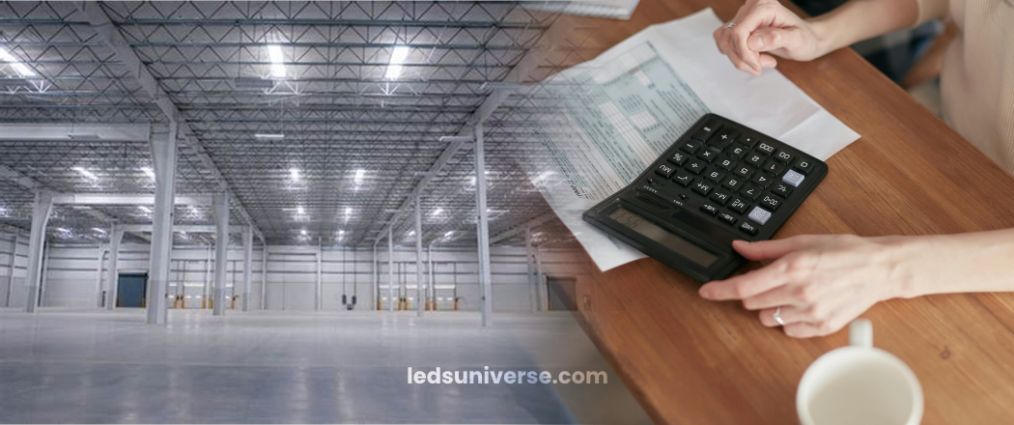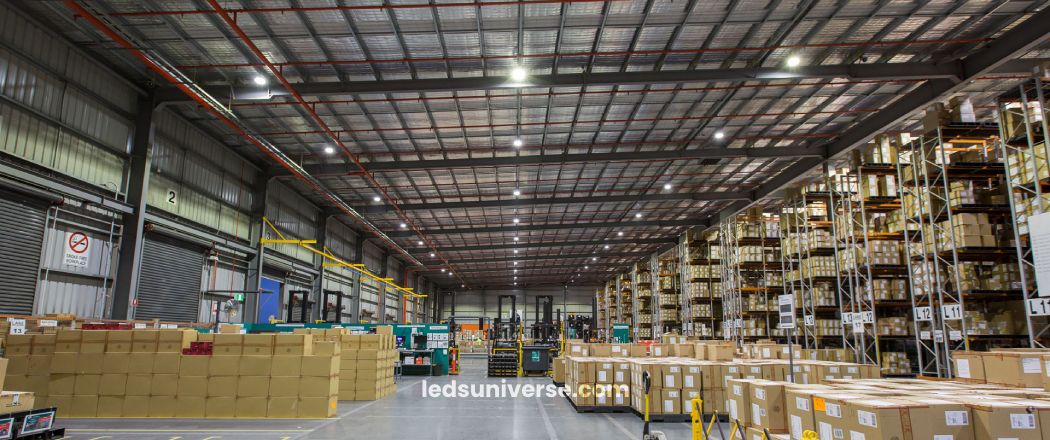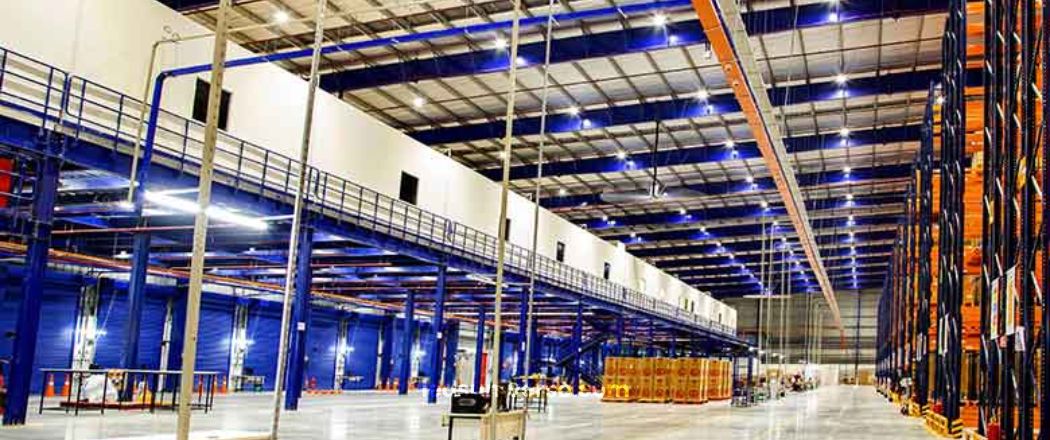In the heart of bustling warehouses and expansive industrial spaces, high bay lighting illuminates vast areas and enhancing productivity. These powerful fixtures not only brighten the workspace but also influence safety, efficiency, and operational costs. As businesses seek to optimize their lighting solutions, the expenses associated with high bay lighting become a critical consideration. From initial installation costs to ongoing energy bills and long-term financial impacts, understanding these factors can turn a simple lighting upgrade into a strategic investment, paving the way for a more efficient and sustainable future.
High bay lighting provides necessary illumination for spaces with high ceilings, such as warehouses, manufacturing plants, and large retail areas. The expenses associated with high bay lighting can vary significantly depending on multiple factors, including the type of lighting chosen, installation costs, and ongoing operational expenses. Understanding these expenses is essential for making informed decisions about lighting solutions.
Reach out for free lighting consultation
Table of Contents
ToggleInitial costs are often the first consideration when investing in high bay lighting. These costs encompass the purchase price of the lighting fixtures and the expenses associated with their installation.

The purchase price of high bay lights can vary considerably based on the type of lighting technology utilized. Common options include LED, fluorescent, and metal halide lights.
| Type of Lighting | Price Range (per unit) | Lifespan | Energy Efficiency |
|---|---|---|---|
| LED Lights | $100 – $400 | 50,000 – 100,000 hours | Highly efficient, 70-80% less energy than traditional options |
| Fluorescent Lights | $50 – $150 | 10,000 – 15,000 hours | Moderate efficiency, higher energy consumption over time |
| Metal Halide Lights | $100 – $300 | 10,000 – 15,000 hours | Less efficient, higher energy use compared to LEDs |
The installation of high bay lighting is another component of initial expenses. Labor costs associated with installation can vary based on geographic location and the complexity of the installation process.
Typically, labor costs for professional installation can range from $50 to $150 per hour. Installation times may vary depending on factors such as the number of fixtures and the existing electrical infrastructure. On average, installing high bay lights in a medium-sized warehouse may take between 10 to 20 hours, leading to an installation cost of approximately $500 to $3,000, depending on labor rates.
In some cases, modifications to the building’s electrical systems or structure may be necessary to accommodate high bay lighting. This can lead to additional costs, which may range from a few hundred to several thousand dollars, depending on the extent of the modifications.
Once high bay lighting systems are installed, ongoing operating expenses come into play. These expenses primarily include energy consumption and maintenance costs.
Energy consumption is a significant factor in the operating expenses of high bay lighting. The type of lighting technology selected can greatly influence energy costs.
LED lights are known for their energy efficiency, typically consuming between 70 to 80 percent less energy than traditional incandescent or metal halide lights. On average, a 150-watt LED high bay light can replace a 400-watt metal halide fixture. For example, if a facility operates 50 fixtures for 12 hours a day, the annual energy cost for LEDs could be approximately $1,200, compared to $3,500 for metal halide lights.
Fluorescent lights also offer energy savings compared to metal halide lights but are less efficient than LEDs. Operating costs for fluorescent high bay lights can vary but may amount to about $2,000 annually for the same number of fixtures and usage hours.
Understanding the energy consumption of different lighting technologies is crucial for estimating ongoing costs and budget planning.
Maintenance expenses play a significant role in the overall operating costs of high bay lighting systems. Regular maintenance is necessary to ensure optimal performance and longevity.
LED lights generally require less maintenance than other lighting types due to their longer lifespan, which can range from 50,000 to 100,000 hours. In contrast, fluorescent and metal halide lights typically have lifespans of 10,000 to 15,000 hours. This discrepancy in lifespan translates into different maintenance costs.
For facilities using fluorescent or metal halide lighting, regular bulb replacements will be a recurring expense. Replacement costs for fluorescent bulbs can range from $5 to $15 per bulb, while metal halide bulbs may cost between $20 and $50 each. In a facility with 50 fixtures, this can lead to annual maintenance costs of $300 to $1,000, depending on the frequency of replacements.
In addition to bulb replacements, there are labor costs associated with maintenance. Hiring professionals to perform maintenance work can add an additional $500 to $1,000 annually, depending on the size of the facility and the extent of the maintenance required.

When evaluating high bay lighting expenses, it is essential to consider long-term financial factors that can impact overall costs and savings.
The lifespan of high bay lighting fixtures directly influences long-term expenses. LEDs stand out for their longevity, often lasting between 50,000 to 100,000 hours, significantly reducing the frequency of replacements and associated costs.
In contrast, fluorescent lights require replacements every 10,000 to 15,000 hours, and metal halide lights have similar lifespans. Over time, the savings from fewer replacements and reduced maintenance can make LEDs a more financially viable option.
For example, if a facility switches to LED lighting, it may see an average savings of $1,000 to $3,000 over the lifespan of the fixtures due to reduced replacement and maintenance costs.
Energy efficiency plays a crucial role in long-term financial planning. High bay lighting systems that consume less energy can lead to significant savings on utility bills.
For instance, transitioning from traditional metal halide lights to energy-efficient LED fixtures can yield annual savings of 50 to 70 percent in energy costs. Over time, these savings can accumulate and offset the initial investment in LED technology.
Calculating the return on investment (ROI) for high bay lighting can provide a clear picture of potential savings. The ROI can be determined by comparing the initial costs and ongoing savings over a specific period, such as five or ten years. Facilities that opt for LED high bay lighting may experience an ROI of 200 percent or more within five years, making it a financially sound choice in the long run.

Several additional factors can impact high bay lighting expenses, including local regulations, incentives, and environmental considerations.
Local regulations and government incentives can significantly influence high bay lighting expenses. Many regions provide rebates or tax credits for businesses that invest in energy-efficient lighting systems. These incentives can greatly reduce the initial costs associated with purchasing and installing high bay lights, making the transition to more efficient options more financially feasible.
Furthermore, compliance with building codes and regulations may necessitate adherence to specific lighting standards. Understanding these regulations is crucial for accurate budgeting and avoiding unexpected expenses during the installation process.
As businesses increasingly focus on sustainability and reducing their environmental impact, high bay lighting choices can contribute to a greener operation.
Energy-efficient lighting technologies, such as LEDs, help lower a facility’s carbon footprint and contribute to overall sustainability efforts. Moreover, considerations surrounding the disposal and recycling of old lighting fixtures can influence long-term expenses. Proper disposal and recycling of fluorescent and metal halide lights, which contain hazardous materials, may incur additional costs if not managed appropriately.
Investing in environmentally friendly lighting solutions can not only lead to financial savings but also enhance a company’s reputation as a responsible corporate citizen.
High bay lighting expenses encompass various factors, including initial costs, operating expenses, long-term financial considerations, and external influences. Understanding these expenses can empower businesses to make informed decisions regarding their lighting solutions. Transitioning to energy-efficient lighting options, such as LEDs, can yield substantial savings over time, both in terms of energy costs and maintenance requirements. By considering local regulations, potential incentives, and environmental impacts, organizations can develop a comprehensive approach to managing their high bay lighting expenses effectively.